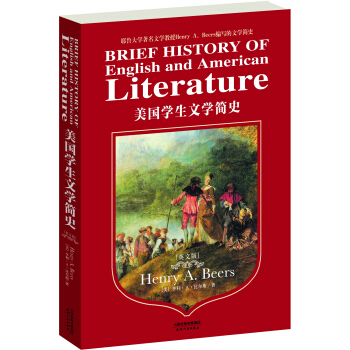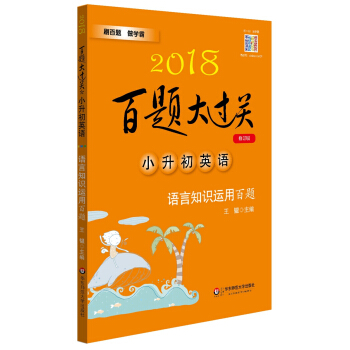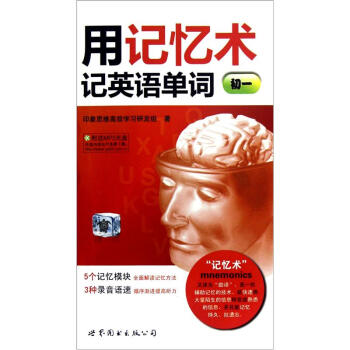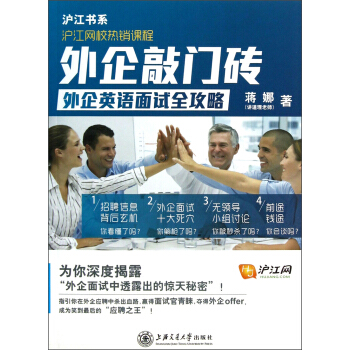

具体描述
编辑推荐
英语国家学生曾经使用的经典阅读教材,国内学生提升英语阅读水平的优秀素材!全书配套英文朗读MP3文件免费下载,在帮助读者学习英美文学史的同时,更好地训练英语阅读水平,带领读者步入优美的英语文学世界,在英语阅读中感受西方文化的魅力!
内容简介
这本全英文版《美国学生文学简史》,由耶鲁大学英语文学教授Henry Beers为英美学生编写,是一部英美文学简史教程,分为上下两部分,包括英国文学史和美国文学史,共17篇章。对于准备出国留学或英语专业学习者来讲,英美文学史是一门必须了解和学习的课程。全书配套英文朗读MP3文件免费下载,在帮助读者学习英美文学史的同时,更好地训练英语阅读水平,带领读者步入优美的英语文学世界。这本英文原版读本,不仅能让国内学生依托教材,全面系统地训练英语,同时,通过书中的故事与文学作品,感受英美历史文化,培养良好的阅读兴趣与品味。本书也适合成人英语学习者提高英语阅读水平使用,让众多国内读者在了解西方文学的同时,感受英语语言的魅力。
In so brief a history of so rich a literature, the problem is how to get room enough to give, not an adequate impression-that is impossiblebut any impression at all of the subject. To do this I have crowded out everything but belles-lettres. Books in philosophy, history, science, etc., however important in the history of English thought, receive the merest incidental mention, or even no mention at all. Again, I have omitted the literature of the Anglo-Saxon period, which is written in a language nearly as hard for a modern Englishman to read as German is, or Dutch. Caedmon and Cynewulf are no more a part of English literature than Vergil and Horace are of Italian. I have also left out the vernacular literature of the Scotch before the time of Burns. Up to the
date of the union Scotland was a separate kingdom, and its literature had a development independent of the English, though parallel with it.
In dividing the history into periods, I have followed, with some modifications, the divisions made by Mr. Stopford Brooke in his excellent little Primer of English Literature. A short reading course is appended to each chapter.
目录
PART I Outline Sketch of English LiteratureCHAPTER 1
FROM THE CONQUEST TO CHAUCER
CHAPTER 2
FROM CHAUCER TO SPENSER
CHAPTER 3
THE AGE OF SHAKSPERE
CHAPTER 4
THE AGE OF MILTON
CHAPTER 5
FROM THE RESTORATION TO
THE DEATH OF POPE
CHAPTER 6
FROM THE DEATH
OF POPE TO THE FRENCH REVOLUTION
CHAPTER 7
FROM THE FRENCH REVOLUTION TO
THE DEATH OF SCOTT
CHAPTER 8
FROM THE DEATH
OF SCOTT TO THE PRESENT TIME
CHAPTER 9
THEOLOGICAL AND RELIGIOUS
LITERATURE IN GREAT BRITAIN
PART II Outline Sketch of American Literature
CHAPTER 10
THE COLONIAL PERIOD
CHAPTER 11
THE REVOLUTIONARY PERIOD
CHAPTER 12
THE ERA OF NATIONAL EXPANSION
CHAPTER 13
THE CONCORD WRITERS
CHAPTER 14
THE CAMBRIDGE SCHOLARS
CHAPTER 15
LITERATURE IN THE CITIES
CHAPTER 16
LITERATURE SINCE 1861
CHAPTER 17
THEOLOGICAL AND
RELIGIOUS LITERATURE IN AMERICA
精彩书摘
CHAPTER 1FROM THE CONQUEST TO CHAUCER
1066~1400.
The Norman conquest of England, in the 11th century, made a break in the natural growth of the English language and literature. The old English or Anglo-Saxon had been a purely Germanic speech, with a complicated grammar and a full set of inflections. For three hundred years following the battle of Hastings this native tongue was driven from the king's court and the courts of law, from parliament, school, and university. During all this time there were two languages spoken in England. Norman French was the birth-tongue of the upper classes and English of the lower. When the latter finally got the better in the struggle, and became, about the middle of the 14th century, the national speech of all England, it was no longer the English of King Alfred. It was a new language, a grammarless tongue, almost wholly stripped of its inflections. It had lost a half of its old words, and had filled their places with French equivalents. The Norman lawyers had introduced legal terms; the ladies and courtiers, words of dress and courtesy. The knight had imported the vocabulary of war and of the chase. The master-builders of the Norman castles and cathedrals contributed technical expressions proper to the architect and the mason. The art of cooking was French. The naming of the living animals, ox, swine, sheep, deer, was left to the Saxon churl who had the herding of them, while the dressed meats, beef, pork, mutton, venison, received their baptism from the tabletalk of his Norman master. The four orders of begging friars, and especially the Franciscans or Gray Friars, introduced into England in 1224, became intermediaries between the high and the low. They went about preaching to the poor, and in their sermons they intermingled French with English. In their hands, too, was almost all the science of the day; their medicine, botany, and astronomy displaced the old nomenclature of leechdom, wort-cunning, and star-craft. And, finally, the translators of French poems often found it easier to transfer a foreign word bodily than to seek out a native synonym, particularly when the former supplied them with a rhyme. But the innovation reached even to the commonest words in every-day use, so that voice drove out steven, poor drove out earm, and color, use, and place made good their footing beside hue, wont, and stead. A great part of the English words that were left were so changed in spelling and pronunciation as to be practically new. Chaucer stands, in date, midway between King Alfred and Alfred Tennyson, but his English differs vastly more from the former's than from the latter's. To Chaucer Anglo- Saxon was as much a dead language as it is to us.
The classical Anglo-Saxon, moreover, had been the Wessex dialect, spoken and written at Alfred's capital, Winchester. When the French had displaced this as the language of culture, there was no longer a "king's English" or any literary standard. The sources of modern standard English are to be found in the East Midland, spoken in Lincoln, Norfolk, Suffolk, Cambridge, and neighboring shires. Here the old Anglian had been corrupted by the Danish settlers, and rapidly threw off its inflections when it became a spoken and no longer a written language, after the Conquest. The West Saxon, clinging more tenaciously to ancient forms, sunk into the position of a local dialect; while the East Midland, spreading to London, Oxford, and Cambridge, became the literary English in which Chaucer wrote.
The Normans brought in also new intellectual influences and new forms of literature. They were a cosmopolitan people, and they connected England with the continent. Lanfranc and Anselm, the first two Norman archbishops of Canterbury, were learned and splendid prelates of a type quite unknown to the Anglo-Saxons. They introduced the scholastic philosophy taught at the University of Paris, and the reformed discipline of the Norman abbeys. They bound the English Church more closely to Rome, and officered it with Normans. English bishops were deprived of their sees for illiteracy, and French
abbots were set over monasteries of Saxon monks. Down to the middle of the 14th century the learned literature of England was mostly in Latin, and the polite literature in French. English did not at any time altogether cease to be a written language, but the extant remains of the period from 1066 to 1200 are few and, with one exception, unimportant. After 1200 English came more and more into written use, but mainly in translations, paraphrases, and imitations of French works. The native genius was at school, and followed awkwardly the copy set by its master.
The Anglo-Saxon poetry, for example, had been rhythmical and alliterative. It was commonly written in lines containing four rhythmical accents and with three of the accented syllables alliterating.
R_este hine th?r_úm-heort; r_éced hlifade
G_eáp and g_óld-f?h, g?st inne sw?f.
Rested him then the great-hearted; the hall towered
Roomy and gold-bright, the guest slept within.
This rude energetic verse the Saxon sc?p had sung to his harp or glee-beam, dwelling on the emphatic syllables, passing swiftly over the others which were of undetermined number and position in the line. It was now displaced by the smooth metrical verse with rhymed endings, which the French introduced and which our modern poets use, a verse fitted to be recited rather than sung. The old English alliterative verse continued, indeed, in occasional use to the 16th century. But it was linked to a forgotten literature and an obsolete dialect, and was doomed to give way. Chaucer lent his great authority to the more modern verse system, and his own literary models and inspirers were all foreign, French or Italian. Literature in England began to be once more English and truly national in the hands of Chaucer and his contemporaries, but it was the literature of a nation cut off from its own past by three centuries of foreign rule.
The most noteworthy English document of the 11th and 12th centuries was the continuation of the Anglo-Saxon chronicle. Copies of these annals, differing somewhat among themselves, had been kept at the monasteries in Winchester, Abingdon, Worcester, and elsewhere. The yearly entries were mostly brief, dry records of passing events, though occasionally they become full and animated. The fen country of Cambridge and Lincolnshire was a region of monasteries. Here were the great abbeys of Peterborough and Croyland and Ely minster. One of the earliest English songs tells how the savage heart of the Danish king Cnut was softened by the singing of the monks in Ely.
Merie sungen muneches binnen Ely
Tha Cnut chyning reu ther by;
Roweth, cnihtes, noer the land,
And here we thes muneches sang.
It was among the dikes and marshes of this fen country that the bold outlaw Hereward, "the last of the English," held out for some years against the conqueror. And it was here, in the rich abbey of Burch or Peterborough, the ancient Medeshamstede (meadow-homestead) that the chronicle was continued for nearly a century after the Conquest, breaking off abruptly in 1154, the date of King Stephen's death. Peterborough had received a new Norman abbot, Turold, "a very stern man," and the entry in the chronicle for 1170 tells how Hereward and his gang, with his Danish backers, thereupon plundered the abbey of its treasures, which were first removed to Ely, and then carried off by the Danish fleet and sunk, lost, or squandered. The English in the later portions of this Peterborough chronicle becomes gradually more modern, and falls away more and more from the strict grammatical standards of the classical Anglo-Saxon. It is a most valuable historical monument, and some passages of it are written with great vividness, notably the sketch of William the Conqueror put down in the year of his death (1086) by one who had "looked upon him and at another time dwelt in his court." "He who was before a rich king, and lord of many a land, he had not then of all his land but a piece of seven feet. . . Likewise he was a very stark man and a terrible, so that one durst do nothing against his will. . . Among other things is not to be forgotten the good peace that he made in this land, so that a man might fare over his kingdom with his bosom full of gold unhurt. He set up a great deer preserve, and he laid laws therewith that whoso should slay hart or hind, he should be blinded. As greatly did he love the tall deer as if he were their father."
……
前言/序言
用户评价
这本书的排版和设计,说实话,初看之下略显朴素,但正是这种不事张扬,反而凸显了内容本身的厚重。我是一个对细节比较敏感的人,注意到译者(或原作者)在处理一些特定时期文学流派的术语时,采取了非常谨慎且精准的措辞,这在很大程度上保留了原汁原味的学术严谨性。特别是涉及到跨学科的引用,比如将文学批评与哲学思辨进行对照时,逻辑链条衔接得异常流畅,没有那种生硬的“强行连接”感。我花了相当多的时间在对比不同时期诗歌形式演变的那一章,它不像其他导读那样只是简单介绍格律的增减,而是深入探讨了语言本身如何随着民族认同感的成熟而发生质变。例如,从早期的模仿欧洲传统到后来建立起具有本土特征的“自由诗体”,这个过程的描写,充满了张力和美感。阅读过程中,我常常需要停下来,回味作者对某一句名言的解读,那种感觉就像是有人在你耳边低语,为你揭示了隐藏在文字深处的密码。这本书对于深度学习者非常友好,因为它提供了充足的思考空间,而不是直接给出标准答案。
评分拿到这本书的时候,我其实是带着一点点忐忑的。毕竟,“简史”这个词听起来就意味着删繁就简,可文学史这种东西,稍微一简化,恐怕就成了干巴巴的骨架,少了血肉和温度。然而,翻开这本书,我立刻就被作者的叙事风格吸引住了。他没有采用那种教科书式的罗列和断代,而是仿佛一位老朋友,带着你穿梭在18世纪的波士顿咖啡馆,聆听早期作家的喃喃自语,然后骤然间,又将你抛入20世纪初喧嚣的城市灯火之中,感受现代主义的冲击。最让我欣赏的是他对语境的描绘,他总能将文学作品的诞生与当时的社会思潮、政治变动紧密联系起来,让你明白为什么福克纳的作品会带着那种撕裂感,或者为什么爱伦·坡的哥特式氛围如此浓重。这种处理方式,使得那些遥远的名字和作品立刻鲜活了起来,不再是纸上的人物,而是特定时代精神的载体。我尤其喜欢其中关于“美国梦”如何被不同作家解构和重塑的章节,作者的分析入木三分,既肯定了其初衷的美好,也毫不留情地揭示了其背后的矛盾与幻灭。对于一个想要系统了解美国文学发展脉络,又不想被枯燥理论淹没的读者来说,这本书无疑是一剂良药。它不是冷冰冰的学术总结,而是一次充满洞察力的思想漫游。
评分这本书最令人耳目一新的地方,在于它对“边缘声音”的关注度。在许多传统的美文学史叙事中,非主流的、女性的、少数族裔作家的声音往往被轻描淡写地带过,或者作为特定章节的补充材料。但在这本书里,作者似乎有意地在各个时间节点上,为这些被淹没的声音提供了足够的篇幅和严肃的分析。我尤其印象深刻的是关于20世纪中期非裔美国人文学复兴的那部分,作者没有将这一现象简单归结为社会运动的副产品,而是深入探讨了这些作家如何巧妙地利用和颠覆既有的美国叙事框架,创造出具有强大抵抗力和文化韧性的文学形式。这种视角上的校准,极大地拓宽了我对“美国文学”的定义和理解,让我意识到,一部真正的文学史,必然是多元且充满张力的,而不是一条单一的、由主流精英铺就的康庄大道。阅读此书,我感觉自己像是在参加一场盛大的文学会议,不同年代、不同背景的声音都在其中交汇碰撞,其思想的丰富性远超预期。
评分老实说,我期望从这样一本“简史”中获得的是一种宏观的鸟瞰,然而,这本书给予我的,却是更接近于一种精雕细琢的微观体验。作者似乎并不急于让你在短时间内掌握所有作家的生平年表,反而更倾向于挑选出几个关键的、具有里程碑意义的作品进行深度剖析。这种选择性的聚焦,反而带来了意想不到的收获。比如,它对“哈罗德·布鲁姆”理论的引入和批判性继承,就远超出了普通入门读物的范畴,它引导读者去思考“文学经典”的建构过程本身,而不是盲目接受既定的经典名单。书中在讨论20世纪后半叶的后现代主义转向时,处理得尤为精彩,它没有将这一阶段描述为一团乱麻,而是清晰地梳理出其内部的派系斗争和思想渊源,让读者能分辨出那些看似晦涩难懂的文本背后,其实蕴含着多么严肃的哲学辩论。这种深入挖掘的倾向,使得阅读过程充满挑战,但也因此更加充实,仿佛不是在读一本历史书,而是在参与一场持续了数百年的思想辩论。
评分如果你期待的是那种读完后可以迅速在考试中拿高分的知识点整理,那么这本书可能会让你感到略微“失望”,因为它更注重培养阅读的“深度感知”而非“记忆广度”。它在描述从殖民地时期到内战前夕的文学演变时,花费了大量的篇幅来探讨美国文化如何试图从欧洲的“母体”中挣脱出来,建立一套属于自己的美学标准,这种对“身份构建”的执着,贯穿了整部作品的始终。作者的文笔老练,行文间不时流露出一种洞悉世事的豁达,不将任何一个作家神化,也不过度贬低任何一个流派。他总能在赞扬其开创性的同时,指出其局限性。例如,他对于“超验主义”的描述,既肯定了其对精神自由的颂扬,也冷静地指出了其脱离现实劳动阶级的倾向。整本书读下来,我最大的感受是,这是一位真正热爱美国文学的学者,以一种近乎私人化的方式,与读者进行了一次深入且坦诚的对话,它提供的是一种理解文学的“方法论”,而非简单的“知识集装箱”。
评分全书配套英文朗读MP3文件免费下载,在帮助读者学习英美文学史的同时,更好地训练英语阅读水平,带领读者步入优美的英语文学世界。手边没书的时候,还可以听着MP3来感受英语的魅力,进入英美文学的别样殿堂。
评分还不错的一本简史文学
评分希望你能越做越好,成长有你有我大家一起来,很好的宝贝。
评分本书不错,讲行细,此书可作为教学部分选定的高校文科教材及美国文学研究的重要参考书,在美国国内广泛使用,畅销不衰。全书精述1 7世纪早期至当今时代的美国文学发展史,评价主要作家及其代表作品,解析引领时代风气或主导作家创作的重要文学思潮和流派等。
评分沟通中达成共识。
评分看下原汁原味的。。。。。
评分④关系和谐,才能有轻松愉快;关系融洽,才能够民主平等。生生和谐、师生和谐、环境和谐、氛围和谐,都需要教师的大度、风度与气度。与同行斤斤计较,对学生寸步不让,艰难有和谐的课堂。和谐的关键在
评分不错啊?物有所值!还快。
评分到的挺快,目前还没读呢!
相关图书
本站所有内容均为互联网搜索引擎提供的公开搜索信息,本站不存储任何数据与内容,任何内容与数据均与本站无关,如有需要请联系相关搜索引擎包括但不限于百度,google,bing,sogou 等
© 2025 book.coffeedeals.club All Rights Reserved. 静流书站 版权所有

![丽声冒险故事岛第5级:外研社英语分级阅读·丽声冒险故事岛(点读版)(附光盘) [11-14岁] pdf epub mobi 电子书 下载](https://pic.windowsfront.com/11351131/rBEhWFKYYmkIAAAAAAOVxHflnfwAAGHewOnGJoAA5Xc568.jpg)








![世界名著典藏系列:堂吉诃德(英文全本) [Don Quixote] pdf epub mobi 电子书 下载](https://pic.windowsfront.com/10104593/rBEIDE_RuN8IAAAAAADbGntnucsAAAfjQIxJ-AAANsy973.jpg)
![世界名著典藏系列:绿野仙踪(中英对照全译本) [The Wonderful Wlzard of Oz] pdf epub mobi 电子书 下载](https://pic.windowsfront.com/10184723/rBEDik_RuXEIAAAAAAEsdYoTqFwAAAfjwNhprEAASyN380.jpg)



![外教社朗文小学英语分级阅读10(附光盘) [Primary English Graded Readers] pdf epub mobi 电子书 下载](https://pic.windowsfront.com/10947023/d705590d-6086-4697-a465-ba2dc9708686.jpg)
![纯真年代(世界文学名著·英语原著版) [The Age of Innocence] pdf epub mobi 电子书 下载](https://pic.windowsfront.com/10983774/rBEGEk-p8wkIAAAAAAAzNnsGD3AAAA5kgBWS98AADNO155.jpg)
![外教社英汉汉英百科词汇手册系列:英汉汉英计算机词汇手册 [An English-Chinese Chinese-English Glossary of Computer Science and Technology] pdf epub mobi 电子书 下载](https://pic.windowsfront.com/10992991/rBEIC0_IMXoIAAAAAAA2kETCNgYAAATmQNADWQAADao704.jpg)
![麦克尤恩作品·译文双语系列:在切瑟尔海滩上(中英双语版) [On Chesil Beach] pdf epub mobi 电子书 下载](https://pic.windowsfront.com/11048965/rBEGFFAgkN8IAAAAAADNc96gPd4AABVMQLGFm8AAM2L529.jpg)

